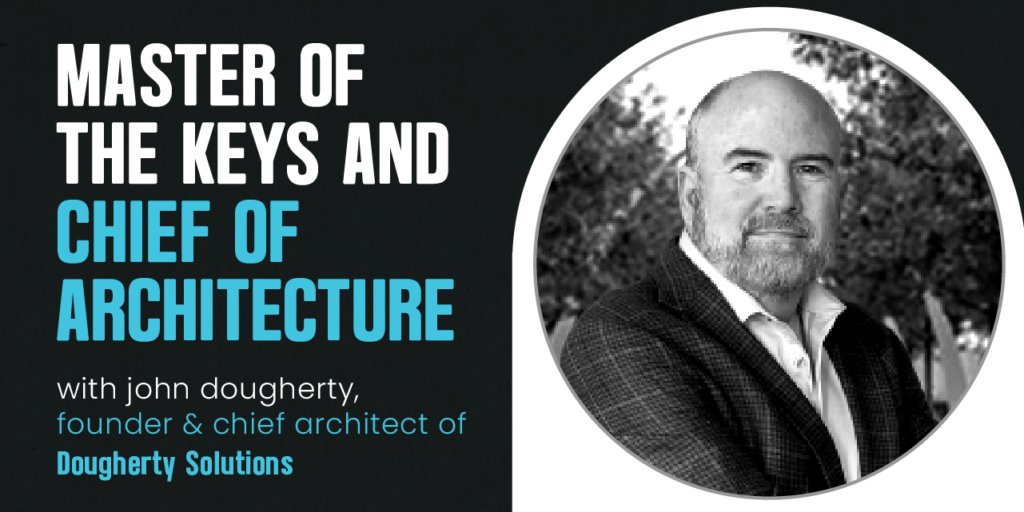With a passion for jazz and extensive involvement in IT and technology execution, John Dougherty is no stranger to passion and inspiration. Solving the “impedance mismatch” by day, playing piano and saxophone by night, today’s Entrepreneur Story comes from a man of many talents.
As the Founder and Chief Architect of Dougherty Solutions, with many years of IT experience (particularly in enterprise architecture, solution architecture, and project management), Joh has plenty of wisdom to share with fellow entrepreneurs.
What are three things every entrepreneur should know?
- Have a Clear Exit Strategy:
You should go into your entrepreneurial ventures with a well-defined exit strategy. Will you close the business down entirely, or will you be handing it over to someone to continue the legacy and the mission?
As a business owner, an exit strategy allows you to sell off or reduce your ownership position in your company. If the company is profitable, you’ll earn a decent amount. If not, you can limit losses.
- Prepare for Downturns:
Entrepreneurs should anticipate and prepare for downturns that may negatively impact their business, according to John. Having strategies in place to weather challenging times is essential for business resilience, both from a financial perspective and from a more emotional and morale-based perspective.
- Focus on Marketing and Sales:
To keep a business thriving, it’s crucial to understand and effectively manage marketing and sales. Building a strong presence, making connections, and sustaining customer engagement are key elements for business success, especially during challenging periods.
John’s personal experience of losing clients during a difficult time emphasizes the importance of being adaptable and having strategies in place to navigate unforeseen challenges.
What problem does your business solve, and who are its customers?
John’s business, Dougherty Solutions, is a consultancy that focuses on bridging the gap between business strategy and IT execution. Essentially, Dougherty Solutions aims to address the issue of “impedance mismatch” in communication between business leaders and the execution of IT and technology strategies.
The problem John solves is ensuring that the understanding of business objectives is effectively translated into IT and technology implementations. He mentioned the challenge of misalignment between business intent and the actual implementation of solutions.
John’s customers are likely to be businesses that face challenges in effectively translating their strategic objectives into practical IT solutions, and they may seek his expertise to streamline this communication and implementation process.

What inspired you to become an entrepreneur?
Having spent about 15 years in various high-level roles within large corporations, John was inspired to become an entrepreneur due to extensive experience in business. He had a background in software architecture, and it wasn’t accidental that he transitioned into entrepreneurship.
The motivation came partially from his observations while working with consultants. John noticed that consultants, despite being paid well, did not have to deal with the same level of corporate politics and weren’t expected to have a long-term commitment to the organizations they served.
This realization, coupled with his passion for building and architecture, led him to consider entrepreneurship as a way to continue doing what he loved without the constraints of corporate politics.
When asked if, given the chance, he would become an entrepreneur again, Johnr replied that he 100% would. He enjoys the work, values the freedom it provides, and appreciates the opportunity to make a real impact on businesses.
Knowing what you know now, how would you have spent a million-dollar investment when you first started your business?
Knowing what he knows now if John had received a million-dollar investment when he first started his business, he would have focused more on branding and market identity. John mentioned that he would have used the funds to build and expand his consultant group, allowing for greater scalability in handling multiple projects simultaneously.
More specifically, he mentioned the potential to promote individuals within his team to the role of architects if there was enough work.
Part of the investment also would have been allocated towards branding efforts, identifying specific niches for the business, and engaging in speaking opportunities both locally and nationally to establish a stronger presence in the market. This strategic approach would aim to enhance the business’s visibility, attract more clients, and position it for long-term success.
What is your proudest accomplishment as an entrepreneur?
John’s proudest achievements as an entrepreneur encompass groundbreaking contributions to the medical device industry as well as government projects. John first mentioned his spearheading the development of what he believes is the first global life-critical software updating system for medical devices.
This system, initially designed for COVID-19 and later adopted by Medtronic, focused on efficiently updating life-critical ventilators. By ensuring correct updates, providing electronic delivery, and training hospital staff, John’s efforts saved hundreds of millions of dollars and facilitated enhanced regulatory tracking during the pandemic.
Additionally, John took on a pivotal role in a cloud-based architecture project for emergency hospitals affiliated with the Veterans Administration. Initiated through the Office of Management and Budget (OMB) for the federal government, the project aimed to establish a reusable, platform-based architecture.
This architecture could be leveraged by various government departments, including the Department of Interior and Education, streamlining budget management processes.
What big goals are you looking to achieve?
John’s current big goal is to venture into the finance sector, particularly in Dallas (where he is situated and where there are abundant opportunities). Despite maintaining an interest in MedTech, he perceives more vibrant activity and prospects in the finance industry.
Given his specialization in architecture and design, John is open to changing problem domains, having previously worked in areas such as medical, insurance, federal government, and now finance. He is actively seeking contracting opportunities in the finance sector and has engaged in discussions that might lead to such opportunities.
In terms of assistance, John acknowledges the importance of marketing and sales for growing his business. He emphasizes the value of building the business in that direction and is earnestly looking for help in these areas. This aligns with his belief in the significance of effective marketing and sales strategies to drive business growth.
What big goals are you looking to achieve? What major accomplishments have you got under your belt? How did they get there, and what inspired you to embark on this journey? We’d love to hear more about your Entrepreneur Story. Get in touch with us today to share it tomorrow!


